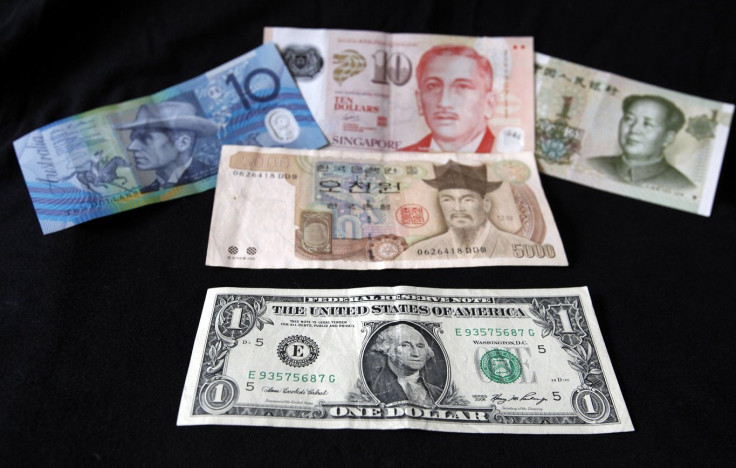Global Markets Overview - Nov. 10, 2015

Equities buying evaporates
Equity markets are now realigning back to the baseline forecasts of 2015 being the beginning of a Fed rate hike cycle.
The S&P’s reaction on Friday to the non-farm payrolls (NFP) was rather calm. Theory suggests that a tighter monetary policy would see risk off trade, yet it didn’t. Why there was a delay in meeting theory will be debated but the 1% decline overnight saw the US markets catching up to theory and will put risk indices under more pressure as we build to 17 December .
Currently all I’m reading is not if the FOMC raise in December, but how many hikes will occur in the cycle. Is it one done, all done? Or is it a further four in 2016 to go with the December rise, as the dot plots are predicting. That would likely see 2016 as one of the choppiest trade periods since 2009 and if the USD continues to create headaches for US earnings, the leads for global equity markets will be even softer.
What’s catching my attention
· Bond markets were all pretty much unchanged overnight across the curve with around a one basis point (bps) move average over the US curve. Two-year bonds were unchanged, ten-year moved two bps and the 30-year move three bps in the US. This shows that this is indeed an equity move.
· USD saw gentle selling as some profit was locked in, however the base case scenario will likely see USD buying kicking in very quickly once enough money is taken off the table. The contrarian trade is likely to bite.
· S&P is down for a fourth consecutive session, in the past five years this has happened 27 times, on 25 of those occasions the fifth day has seen an average gain of 1.4%. Tonight could see the 26th time being locked in.
· The Saudi oil minter last night stated, ‘prices are likely to see increase to normalisation levels in the near future’. The demand/supply equation is being pushed to the left, and one would suspect that demand will kick in at US$40 a barrel.
· Aussie VIX jumped 16% yesterday to revert back to the year’s mean average of 21.
· The energy sector remains a tough one to see buying, Issues in Santos, Origin and the like are still years from being resolved. However the discounts inside these names is likely to mean short sharp bounces on moves in the oil price. There are traps here as equity raising similar to what STO announced yesterday are still very much a live event, but if oil does bounce back into the US$50 handle, energy will power back into favour on a very short-term outlook.
· BHP hit a new seven year low yesterday at $21.42 – however it has split out South32 since that low. Considering the neatness of the split on a one for one basis, adding it back means BHP would be at approximately $22.91 – in line with the seven year low. The expected 1.2% decline today will see BHP at a seven year low with or without S32.
· BHP looks oversold, and if you look at RSIs and stochastics it does show BHP is touching the oversold level on both indicators. On a price-to-book ratio, BHP is trading at a ten-year low of 1.23 times. However considering the price of oil, iron ore, copper and coal (the four-pillars), earning expectations have been severely downgraded. On a 12-month forward blended price-to-earnings ratio BHP is trading at 21.98 times, the highest level in ten years. The cyclical nature of the ‘new’ BHP is very clear in the new commodity world.
Ahead of the Australian Open
Ahead of the open we are calling the ASX down just 56 points to 5063. This level was the inflection point of the triangle pattern created at the end of September. No sector has been spared, meaning bottom buying is coming – the question is when it will come
Asian markets opening call
Price at 8:00am AEDT
Change from the Offical market close
Percentage Change
Australia 200 cash (ASX 200)
5,063.00
-56
-1.10%
Japan 225 (Nikkei)
19,371.60
107
0.55%
Hong Kong HS 50 cash (Hang Seng)
22,427.40
-299
-1.32%
China H-shares cash
10,405.50
-101
-0.96%
Singapore Blue Chip cash (MSCI Singapore)
333.15
-2
-0.69%
US and Europe Market Calls
Price at 8:00am AEDT
Change Since Australian Market Close
Percentage Change
WALL STREET (cash) (Dow)
17,693.00
-222
-1.25%
US 500 (cash) (S&P)
2,072.88
-28
-1.44%
UK FTSE (cash)
6,294.90
-81
-1.24%
German DAX (cash)
10,802.60
-244
-2.21%
Futures Markets
Price at 8:00am AEDT
Change Since Australian Market Close
Percentage Change
Dow Jones Futures (December)
17,638.50
-221.50
-1.24%
S&P Futures (December)
2,067.38
-28.75
-1.37%
ASX SPI Futures (December)
5,056.50
-55.50
-1.07%
NKY 225 Futures (December)
19,402.50
-275.00
-1.40%
Key inputs for the upcoming Australian trading session (Change are from 16:00 AEDT )
Price at 8:00am AEDT
Change Since Australian Market Close
Percentage Change
AUD/USD
$0.7052
-0.0006
-0.09%
USD/JPY
¥123.085
-0.270
-0.22%
Rio Tinto Plc (London)
£23.08
0.25
1.12%
BHP Billiton Plc (London)
£9.62
-0.13
-1.33%
BHP Billiton Ltd. ADR (US) (AUD)
$21.17
-0.25
-1.19%
Gold (spot)
$1,091.65
1.81
0.17%
Brent Crude (December)
$47.22
-0.61
-1.29%
Aluminium (London)
1504
-19.00
-1.25%
Copper (London)
4959
-19.50
-0.39%
Nickel (London)
9530
-110.00
-1.14%
Zinc (London)
1639.5
-25.50
-1.53%
Iron Ore (62%Fe Qingdao)
$48.24
0.03
0.06%
IG Iron Ore (CNH)
¥338.25
-0.80
-0.24%
IG provides round-the-clock CFD trading on currencies, indices and commodities. The levels quoted in this email are the latest tradeable price for each market. The net change for each market is referenced from the corresponding tradeable level at Friday’s close of the ASX. These levels are specifically tailored for the Australian trader and take into account the 24hr nature of global markets.
Please contact IG if you require market commentary or the latest dealing price.
EVAN LUCAS Market Strategist
IG Markets
[Kick off your trading day with our newsletter]
More from IBT Markets:
Follow us on Facebook
Follow us on Twitter
Subscribe to get this delivered to your inbox daily






